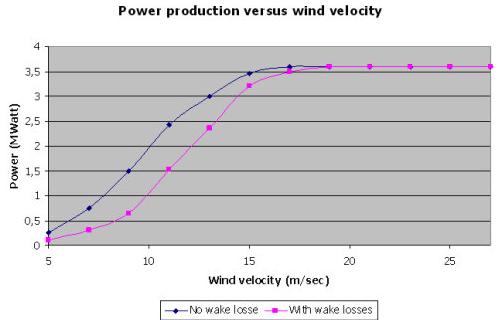When the natural wind passes through the fan, because the fan absorbs part of the wind energy into mechanical energy, resulting in a certain degree of wind intensity attenuation, this is the wake effect.
In the same wind field, the distance between wind turbines is small, and the wake generated by fan operation will have an impact on the wind field of adjacent fans, thus affecting the annual output power of the fan.The wake is the main factor to optimize the fan layout.In general, natural wind speed is only suitable for calculating the mechanical power of the fan in the front row, and the influence of wake should be taken into account when calculating the power of other fans.
After the wind passes through the fan blade, the wind speed in the wake area will be reduced by about 1/3.In addition, the wake effect will also produce turbulence, increase fan impeller vibration and load, reduce fan service life.
The operation experience of wind field in California shows that the typical value of wake loss is 10%.According to different topography, distance between units and turbulence intensity of wind, wake loss can be as low as 2% and as high as 30%.
The figure below shows the influence of wake effect obtained by Ris on fan output power (wind power curve).It can be seen that under the condition of the same wind speed, the fan output power is different due to the influence of wake effect.



